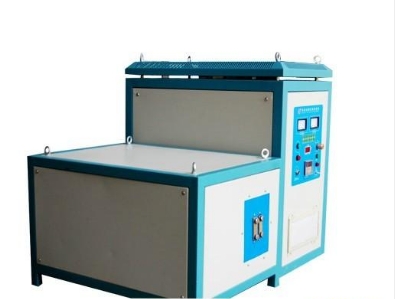- 24
- Feb
How to design and manufacture induction heating and quenching inductors?
How to design and manufacture induction heating and quenching inductors?
Quenching inductor is a key heating element that uses the principle of eddy current to quench the surface of parts and strengthen the surface. There are many types of surface heating parts, and their shapes are very different. Therefore, the design of the sensor is different. Generally, the size of the sensor mainly considers the diameter, height, cross-sectional shape of the induction coil, cooling water path and spray hole, etc., and its design The idea is as follows.
1. The diameter of the sensor
The shape of the inductor is determined according to the surface profile of the heating part. There must be a certain gap between the induction coil and the part, and it must be uniform everywhere.
When heating the outer circle, the inner diameter of the sensor Din=D0+2a; when heating the inner hole, the outer diameter of the sensor Dout=D0-2a. Where D0 is the outer diameter or inner hole diameter of the workpiece, and a is the gap between the two. Take 1.5~3.5mm for shaft parts, 1.5~4.5mm for gear parts, and 1~2mm for inner hole parts. If the medium frequency heating and quenching is carried out, the gap is slightly different. Generally, the shaft parts are 2.5~3mm, and the inner hole is 2~3mm.
2. The height of the sensor
The height of the inductor is mainly determined according to the power P0 of the heating equipment, the diameter D of the workpiece and the determined specific power P:
(1) For the one-time heating of short shaft parts, in order to prevent overheating of sharp corners, the height of the induction coil should be less than the height of the parts.
(2) When the long shaft parts are heated and locally cooled at one time, the height of the induction coil is 1.05 to 1.2 times the length of the quenching zone.
(3) When the height of the single-turn induction coil is too high, the surface of the workpiece will be heated unevenly. The middle temperature is much higher than the temperature on both sides. The higher the frequency, the more obvious, so double-turn or multi-turn induction coils are used instead.
3. The cross-sectional shape of the induction coil
The induction coil has many cross-sectional shapes, such as round, square, rectangular, plate type (externally welded cooling water pipe), etc. When the quenching area is the same, bending into a rectangular cross-section induction coil is the most economical, and the heat-permeable layer is uniform and round. The cross-section is the worst, but it is easy to bend. The selected materials are mostly brass tubes or copper tubes, the wall thickness of the high frequency induction coil is 0.5mm, and the intermediate frequency induction coil is 1.5mm.
4. Cooling water path and spray hole
Considering that heat is generated due to eddy current loss, each component needs to be cooled by water. The copper pipe can be directly cooled by water. The copper plate manufacturing part can be made into a sandwich or externally welded copper pipe to form a cooling water circuit; high-frequency continuous or simultaneous heating adopts self-cooling During spray cooling, the diameter of the water spray hole of the induction coil is usually 0.8~1.0mm, and the medium frequency heating is 1~2mm; the angle of the water injection hole of the continuous heating and quenching induction coil is 35°~45°, and the hole distance is 3~5mm. At the same time, the heating and quenching spray holes should be arranged in staggered arrangement, and the spacing of the holes should be evenly arranged. Generally, the total area of the spray holes should be smaller than the area of the inlet pipe to ensure that the spray pressure and the inlet pressure meet the requirements.
It should be noted that in order to solve the annular effect of the inner hole heating, ferrite (high-frequency hardening) or silicon steel (medium-frequency hardening) sheets can be clamped on the induction coil to make a gate-shaped magnet, and the current is driven along the gap of the magnet ( The outer layer of the induction coil) flows through. In order to prevent the parts that should not be hardened from being heated, steel rings or soft magnetic materials can be used to make magnetic short-circuit ring shields. In addition, during induction heating, the gap between the induction coil near the sharp corner should be appropriately increased to prevent local overheating.

